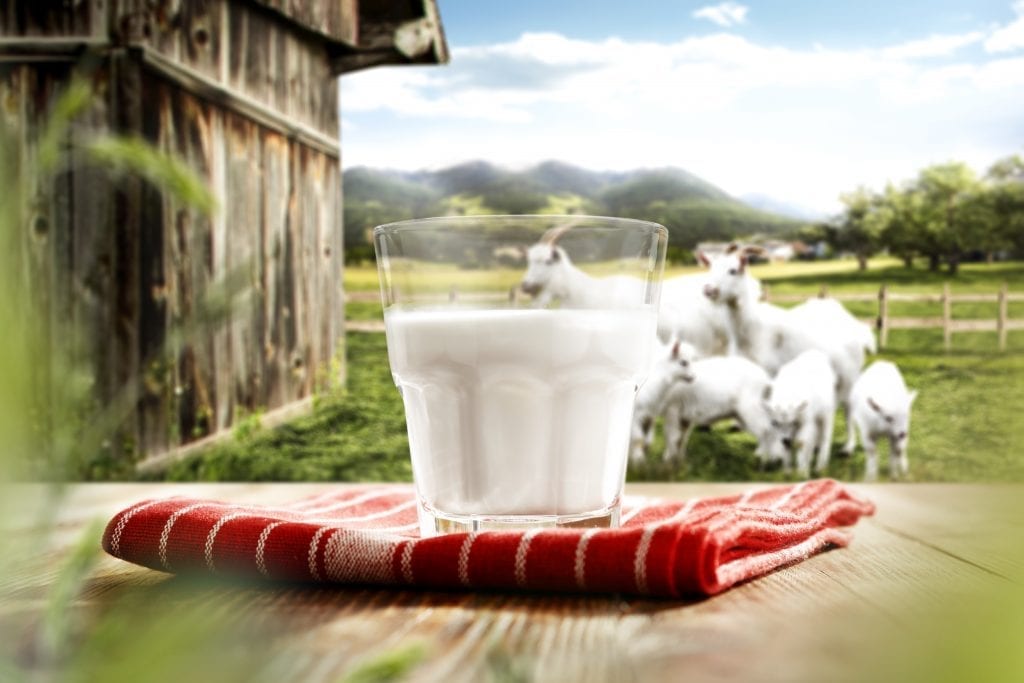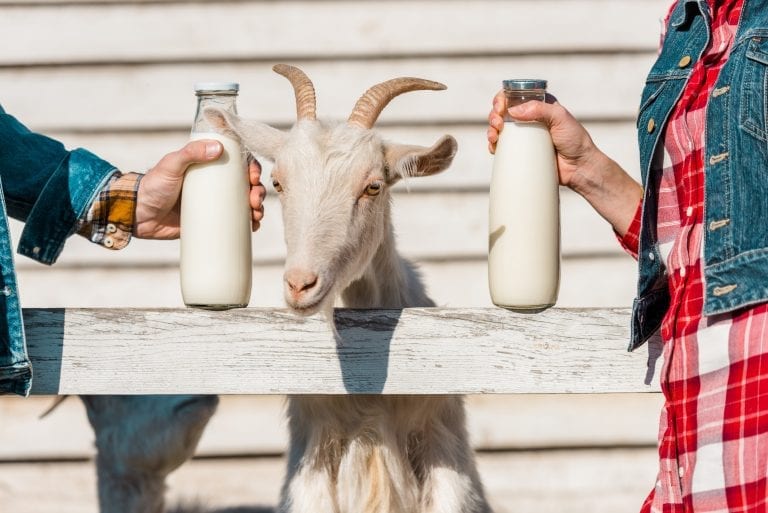Always one of the main alternatives to cow's milk, goat's milk is a drink rich in nutrients and that's easily digestible. There are, however, legends and false myths surrounding it. For example, lactose content, which is not absent, but almost identical the quantity in cow's milk.
Medicinal benefits of goat’s milk
Let's start with the pros. Rich in minerals––especially phosphorus, calcium and potassium––goat's milk is ideal for the growth phase, although not suitable to replace mother's milk during breastfeeding. Furthermore, it is recommended for those suffering from osteoporosis, thanks to its high phosphorus content, which is essential for bone health.
Goat’s milk and digestibility
Rich in proteins, it also has good anti-inflammatory properties and is recommended for strengthening bones and metabolism. The real strongpoint, however, is goat's milk easy digestibility: thanks to its essential fatty acids and medium and short chain fatty acids, this milk is lighter for our body than cow's milk. In fact, this type of fat is assimilated and used immediately, without any accumulation in the bloodstream.
Taurine
Abundance of antioxidant properties thanks to the presence of taurine, a precious amino acid that also performs beneficial functions on the immune system and cardiovascular system. Precisely for this reason, and due to a high content of phosphorus and calcium, goat's milk is suitable for children and teenagers but also for the elderly.
Lactose in goat’s milk
Over time, the idea has spread that goat's milk does not contain lactose, a characteristic that would make it suitable even for those suffering from intolerances. In reality, this is inaccurate, because the content is very similar to that of cow's milk. If the percentage of lactose in 100 grams of whole cow's milk is around 5 grams, in goat's milk we are at about 4.2/4.3 per 100 grams of milk.

Goat milk
Lactose intolerance: what is it and how does it affect us
The concept of digestibility, in fact, should not be confused with tolerance: intolerant or sensitive subjects have an insufficient amount of lactase in the small intestine, an enzyme that has the function of separating lactose (a sugar) into its simplest components––glucose and galactose––and thus allow their digestion.
Consequences of lactose intolerance
If not separated (in the case of intolerance) lactose undergoes fermentation processes that cause the production of waste such as gas––hydrogen and methane––and toxins, responsible for bloating, stomach ache and all the gastrointestinal symptoms that characterize intolerance. In short, goat's milk is a digestible product, yes, but not by the lactose intolerant, who must however resort to alternative beverages such as vegetable milks, of which we will soon write about again in more detail.
The price of goat’s milk
How much does goat's milk cost? Retail prices range from 2.20 to 5 euro per liter, depending on the quality, freshness, type of farming, breed, organic certification and the like. A figure slightly higher than cow's milk, but still accessible.
Goat’s milk in Italy
For a long time forgotten and always overshadowed by cow's milk (partly because of its intense and bold flavour), goat's milk has recently started reaping success. According to Assolatte calculations, in the last 18 years production has increased substantially, registering a growth of 162%. The greater availability of goat's milk, furthermore, has allowed companies to expand their range of products, from yogurt to cheese, offering consumers a more varied and differentiated offer.
Production
Currently, dairy goats represent about 94% of the total population of goats in Italy, with higher concentrations in Sicily, Sardinia, Piedmont and Lombardy. The average production, however, is not very high: we are talking about a figure that ranges from 2.5 to 3 liters per day per goat, a number that also changes depending on the breed.
Where to purchase goat’s milk
Buying goat's milk is very simple: present in large-scale distribution for years, but only in the long-life uht version. To taste it fresh, instead, you need to go directly to the farms and dairies in your area. Of course, there are plenty of e-commerce sites and specialized companies that offer shipping services.
by Michela Becchi


 Nostalgia for the ruthless critic: nobody writes scathing reviews after dining out anymore
Nostalgia for the ruthless critic: nobody writes scathing reviews after dining out anymore The 10 best sweet wines to gift at Christmas with great value for money chosen by Gambero Rosso
The 10 best sweet wines to gift at Christmas with great value for money chosen by Gambero Rosso The quiet bar that changed a piece of Rome: the story of Tuba, a beacon of civility and feminism
The quiet bar that changed a piece of Rome: the story of Tuba, a beacon of civility and feminism A Calabrian wine triumphs in the New York Times: among the best of 2024
A Calabrian wine triumphs in the New York Times: among the best of 2024 The 13 best Sauvignon wines from Alto Adige chosen by Gambero Rosso (with the White Wine of the Year)
The 13 best Sauvignon wines from Alto Adige chosen by Gambero Rosso (with the White Wine of the Year)







